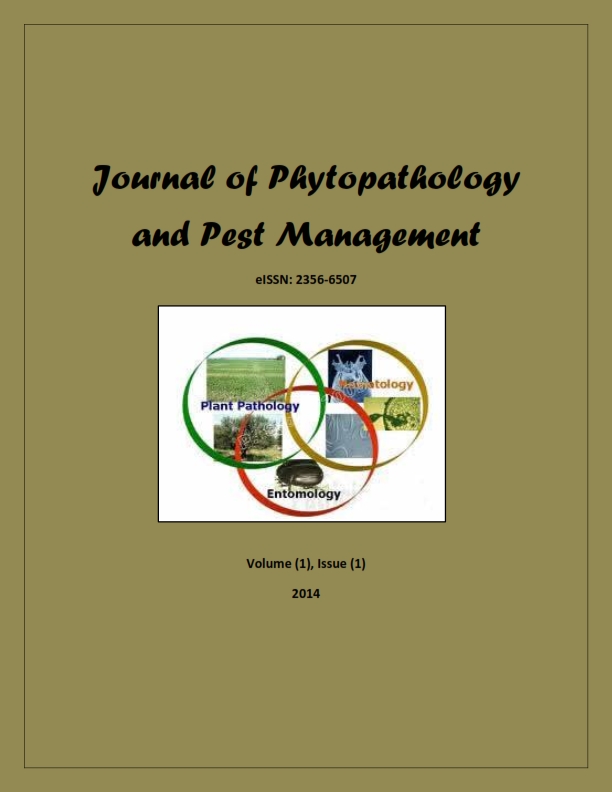Acalypha indica Linn is a potential source of root-knot nematode infestation in cultivated fields
Keywords:
Acalypha indica, infestation, Meloidogyne incognita, weedAbstract
Acalypha indica L. is a commonly growing weed in India, which is also known as Indian Acalypha. These plants were growing as a weed in pots wherein okra was planted for experimental purpose. Infestation of the root-knot nematode, Meloidogyne incognita was observed on it. Soil and root samples were collected for analyses of nematode infestation. Roots of the infested plants were galled measuring gall index (GI) of 3-4. The population density of second stage juveniles (J2) in soil varies from 378-752/200cc soil and the roots were harboring 3876-7654 eggs/per root system. The root galling and presence of high population of nematode eggs and J2 revealed that A. indica can be a reservoir for M. incognita during non-host cropping and serve as a source of infestation to other hosts in the next cropping season. So, in the light of present findings growers are advised to be watchful for A. indica in their fields, and keep the field free from this weed to minimize the infestation of M. incognita in the next crop. Â
Metrics

Downloads
Published
How to Cite
Issue
Section
License
Authors who publish with Journal of Phytopathology and Disease Management agree to the following terms:
- Authors retain copyright and grant the journal right of first publication with the work simultaneously licensed under a Creative Commons Attribution License that allows others to share the work with an acknowledgement of the work's authorship and initial publication in this journal.
- Authors retain copyright and grant the journal right of first publication with the work simultaneously licensed under the Creative Commons Attribution-Non Commercial License (CC BY-NC). This allows others to share the work with an acknowledgement of the work's authorship and initial publication in this journal.
- Archives of Agricultural Sciences Journal is an Open Access Journal, and articles published are distributed under the terms of the Creative Commons Attribution-Non Commercial License (CC BY-NC). Readers may copy, distribute, and display the work for non commercial purposes with the proper citation of the original work. However, the journal retains the right to exploit subsidiary rights on behalf of the authors.
- Authors are able to enter into separate, additional contractural arrangements for the non-exclusive distribution of the journal's published version of the work (e.g. post it to an institutional repository or publish it in a book), with an acknowledgement of its initial publication in this journal.
- Authors are permitted and encouraged to post their work online (e.g., in institutional repositories or on their website) prior to and during the submission process with full disclosure to the journal, as it can lead to productive exchanges, as well as earlier and greater citation of published work. Following publication in Archives of Agricultural Sciences Journal, the author should update the repository, and include a citation and link to the published work.
Click here for more information on Licensing policy
.png)




